Obi: The Origin Story
In 2014, I started creating these free-flowing meditative drawings which I eventually dubbed Àshe. This style of drawing came to me one Sunday at a cafe, while I hanging out and having conversation with my friend Sarah. I remember opening up my black Moleskine notebook, putting pen to paper and watching my hand glide across the page in slow, stretched sinusoidal movements. I was transfixed by the nexus of fluid curves that were always becoming something or someone yet never being anything or anyone in particular.
I became obsessed.
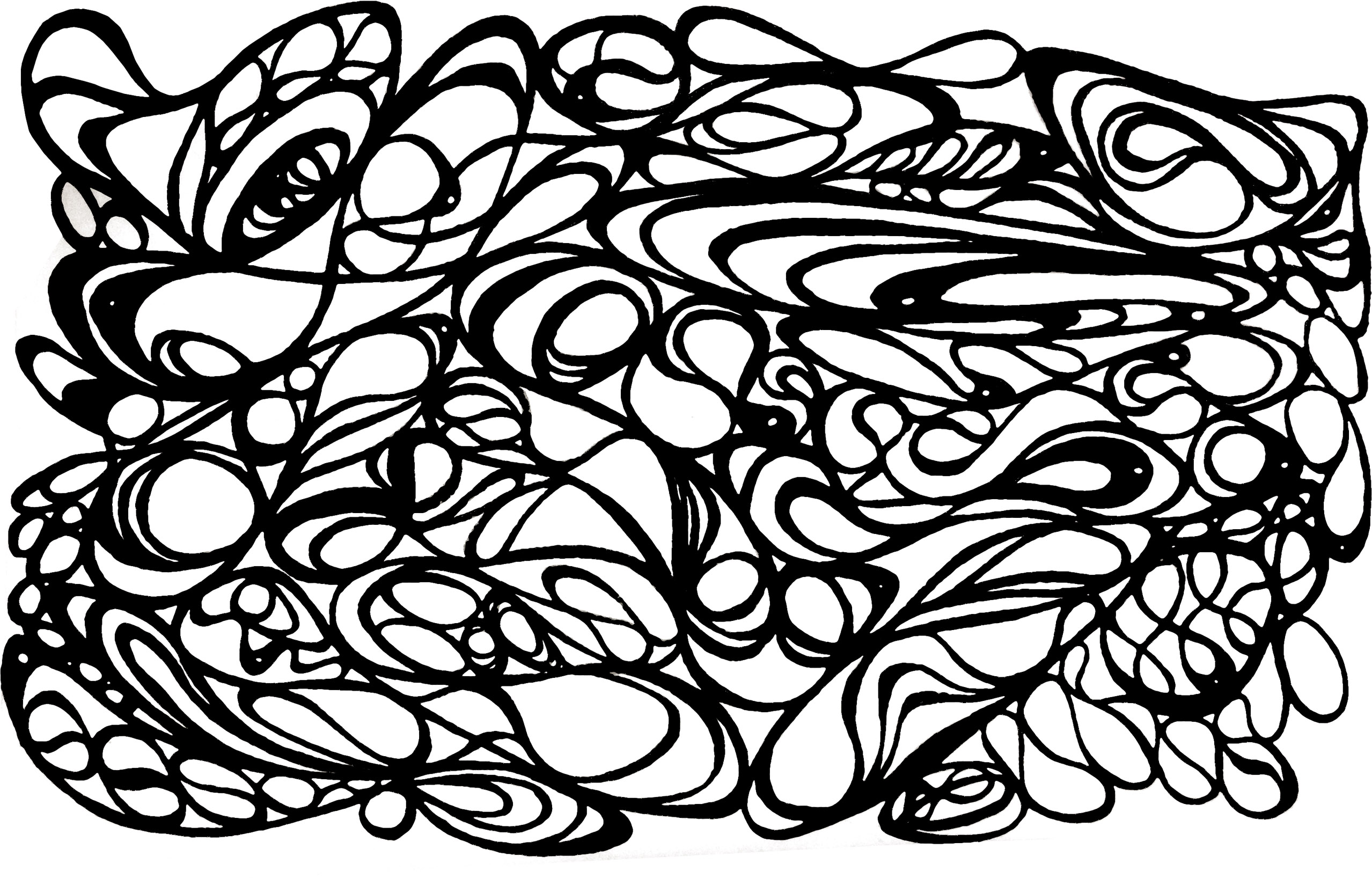
The first Àshe drawing.
In the months that followed, I continued to sit to draw these lines, curious to see where I'd end up. It became a way to slow down and embrace the unknown. Creating these drawings required me to be still and simply watch the world unfold. It didn’t matter that there was no particular destination in mind. Like in meditation, it was surrendering to the journey and trusting the process.
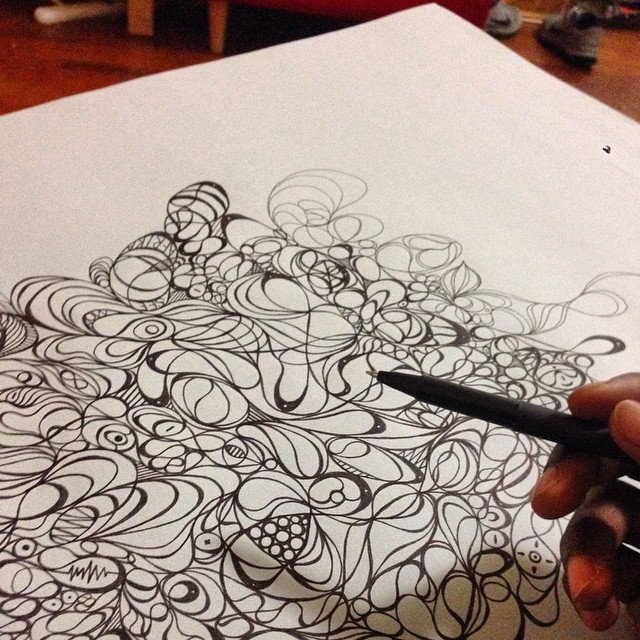
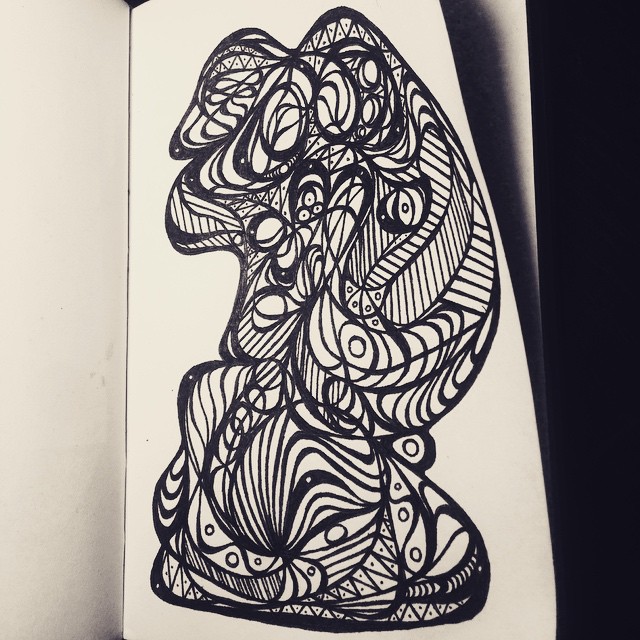
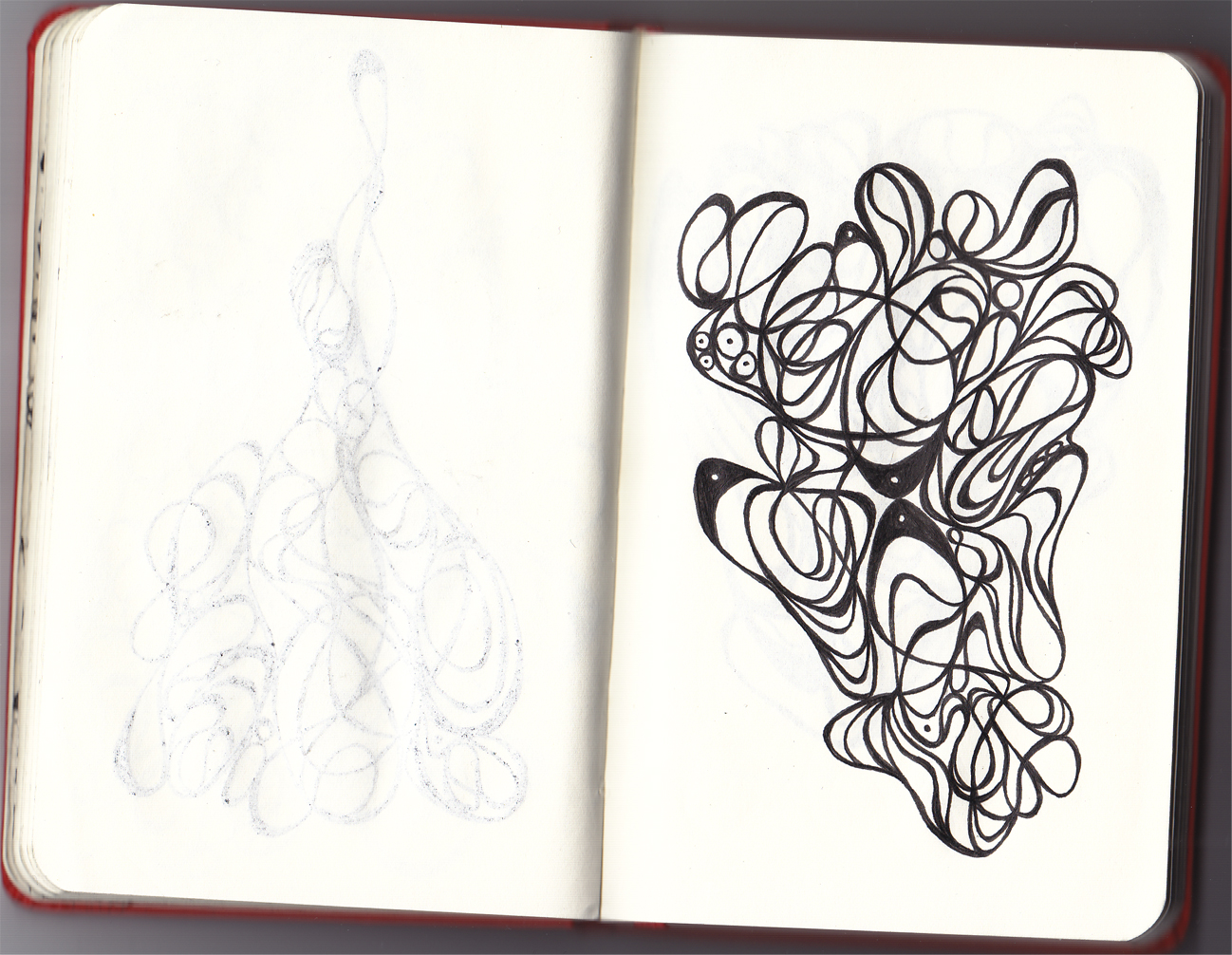

Over time, these abstract drawings began to incorporate elements from my growing knowledge of various Afrikan histories. It felt natural to blend in references to symbols like the Akan Adinkra, writing systems like the Nsibidi, among a host of other alphabets and writing systems I was learning about. Something about the dynamic line movements that characterize the style and the total spontaneity inherent within it, reminded me strongly of that spark of life which animates all things and which can be everything and everywhere at once; that intangible ‘live/life wire’ that intricately binds us all in oneness.
These realizations explain why the name Àshe—the Yoruba concept defining the divine life energy that activates and sustains all—felt like a good way to capture the magic and energy of the art. I even created a short web story in 2014 that explored this
These realizations explain why the name Àshe—the Yoruba concept defining the divine life energy that activates and sustains all—felt like a good way to capture the magic and energy of the art. I even created a short web story in 2014 that explored this




And just like that, what started off as an almost accidental result of my unfocused doodling, has morphed into a source of meaning, the basis of abstract dreamscapes, symbols of strength and culture and even the foundation of various fabric design and pattern making experiments.

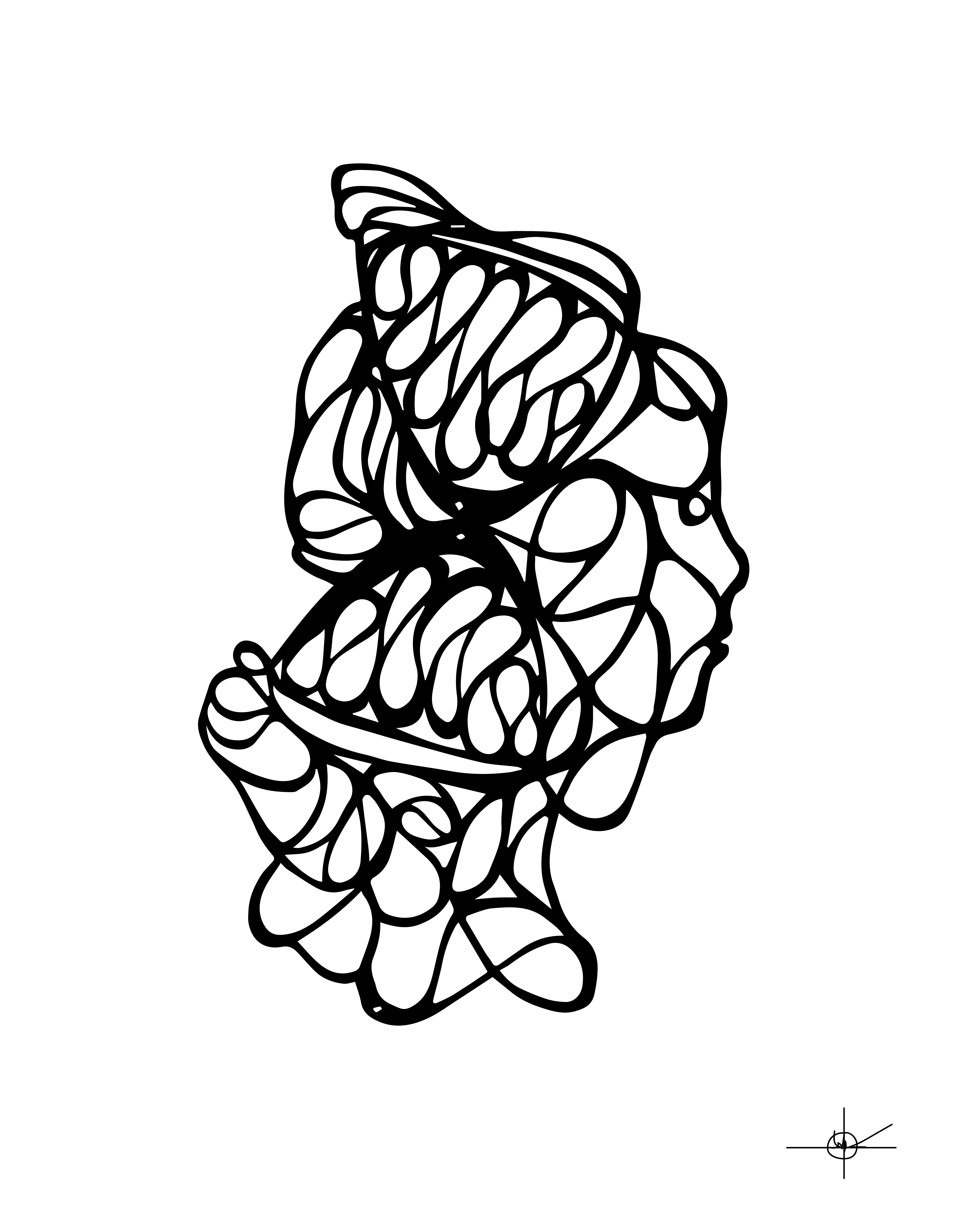


Which finally brings us to obi.
You see, the more Àshe drawings I made, the more various ‘extension’ ideas came to mind i.e. I naturally began to see different directions I could take this free-style art-form in. I began experimenting more with shape and color to create different forms and compositions. After that I’d ran the finished pieces through various tiling and pattern making processes to create compelling repeats and motifs for fabric designs. And adjusting the parameters in the pattern making software, was like a trip in itself. It always felt like such an incredible experience to sit back and see your work evolve in different ways, via tiling and repeat effects that can transform images in unimaginable ways.
You see, the more Àshe drawings I made, the more various ‘extension’ ideas came to mind i.e. I naturally began to see different directions I could take this free-style art-form in. I began experimenting more with shape and color to create different forms and compositions. After that I’d ran the finished pieces through various tiling and pattern making processes to create compelling repeats and motifs for fabric designs. And adjusting the parameters in the pattern making software, was like a trip in itself. It always felt like such an incredible experience to sit back and see your work evolve in different ways, via tiling and repeat effects that can transform images in unimaginable ways.
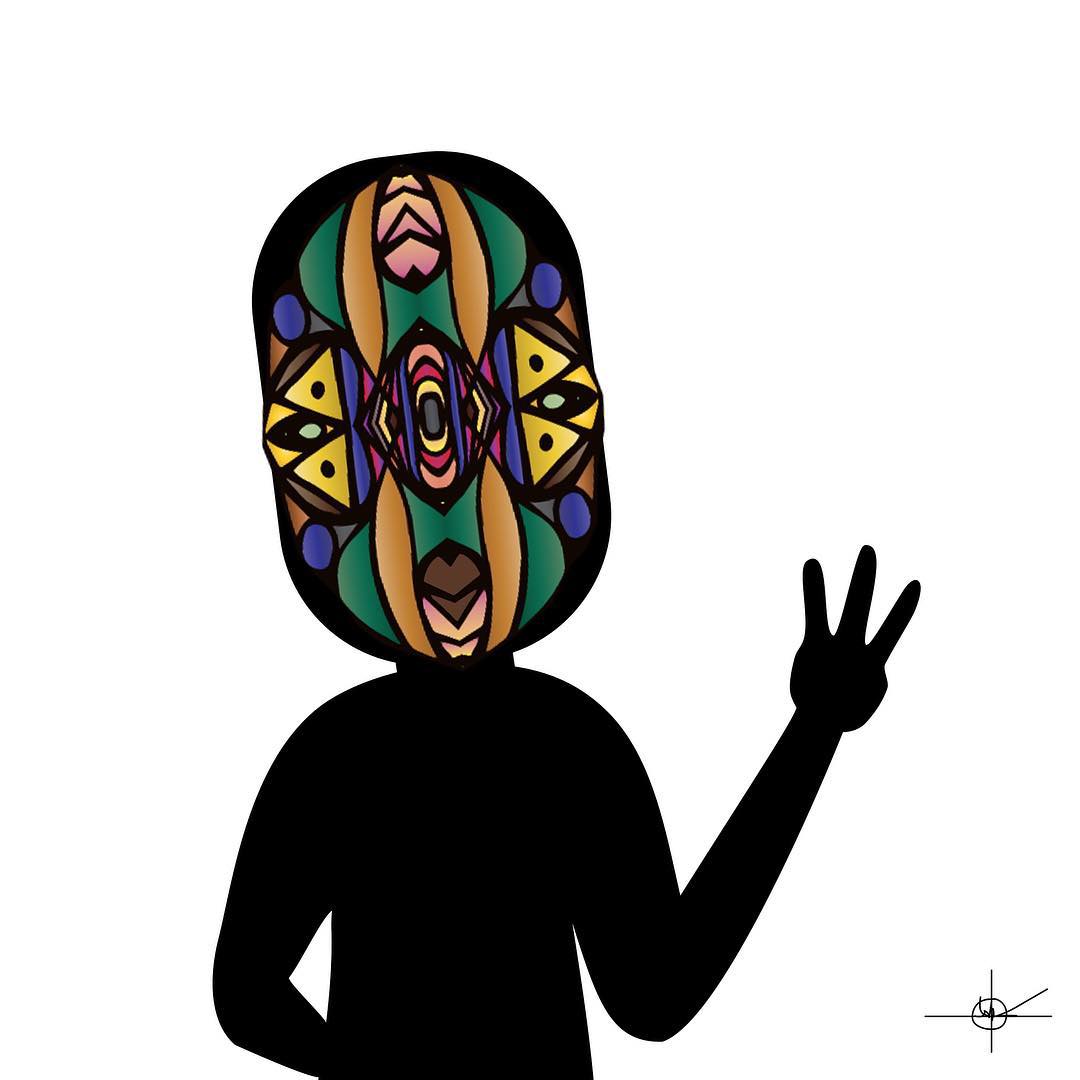
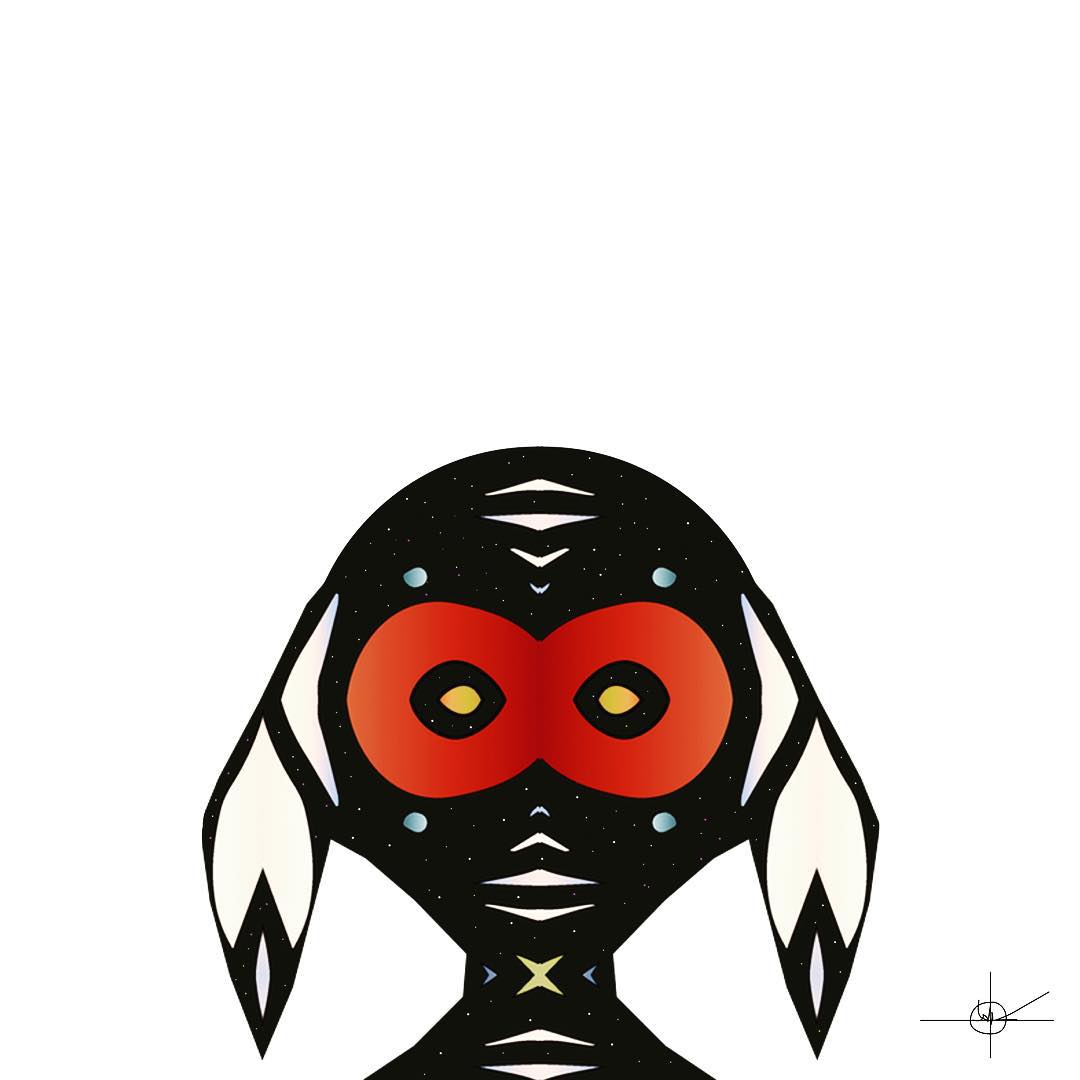

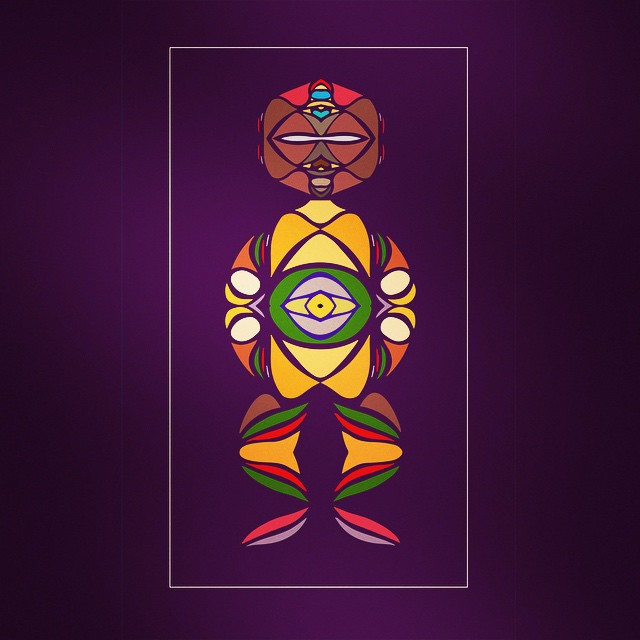
As you can imagine, this is when things started getting really weird.
One day while going through this process, I saw a face. In reality, it was a motif but all I could see was an alien face or perhaps some retrofuture Afrikan robot mask. And as I tinkered with the software's parameters, I started to see more and more of these hidden faces and masks. They would appear in certain sweet spots and I couldn’t unsee them. These gripping objects of symmetry were alive to me and they wouldn't stop staring.
I stared back.
One day while going through this process, I saw a face. In reality, it was a motif but all I could see was an alien face or perhaps some retrofuture Afrikan robot mask. And as I tinkered with the software's parameters, I started to see more and more of these hidden faces and masks. They would appear in certain sweet spots and I couldn’t unsee them. These gripping objects of symmetry were alive to me and they wouldn't stop staring.
I stared back.

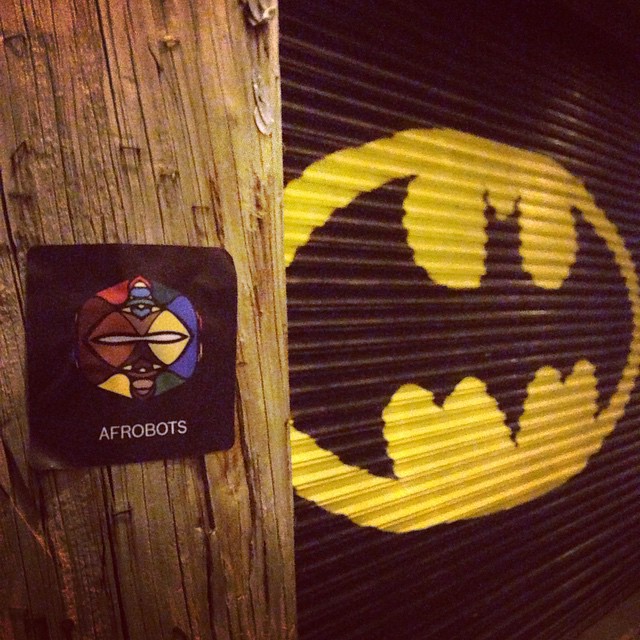
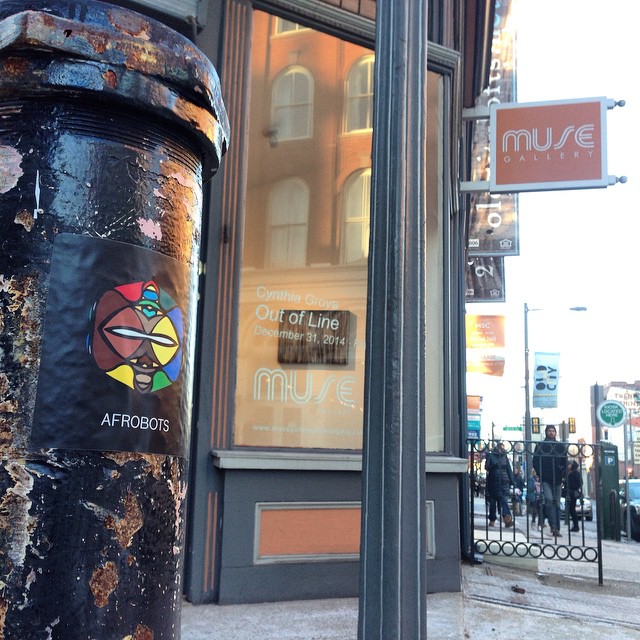
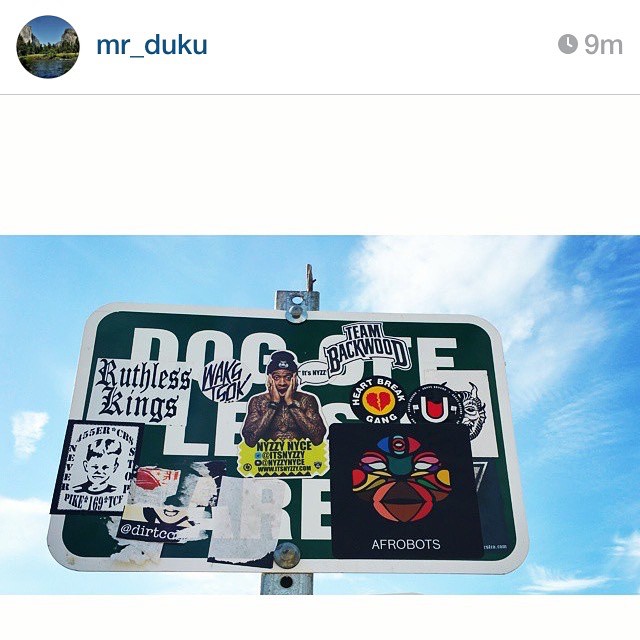
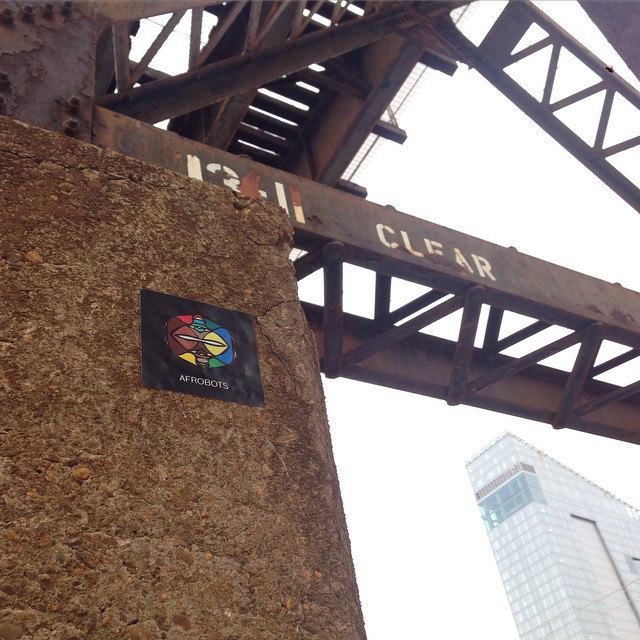
Unsurprisingly, I became obsessed with discovering them. I didn’t know who I’d meet next but I always looked forward to it. These hidden beings became reminders of the awe of the unknown and the treasures you can uncover when you embrace it. From the unfiltered spontaneity of the Àshe drawing style to the mysterious visuals borne of the tiling effects, the value in trusting the process was clearer to me, thanks to these shapeshifters.
As I uncovered more of these faces, I then began experimenting with them by adding simple forms to them to create highlight the sense that they were actual living characters. With that, they transitioned from mere symmetrical shapes to little odd balls not unlike humans.
I first named them Afrobots.
And then I named them Afronauts.
And then I called them Afromorphs.
As I uncovered more of these faces, I then began experimenting with them by adding simple forms to them to create highlight the sense that they were actual living characters. With that, they transitioned from mere symmetrical shapes to little odd balls not unlike humans.
I first named them Afrobots.
And then I named them Afronauts.
And then I called them Afromorphs.
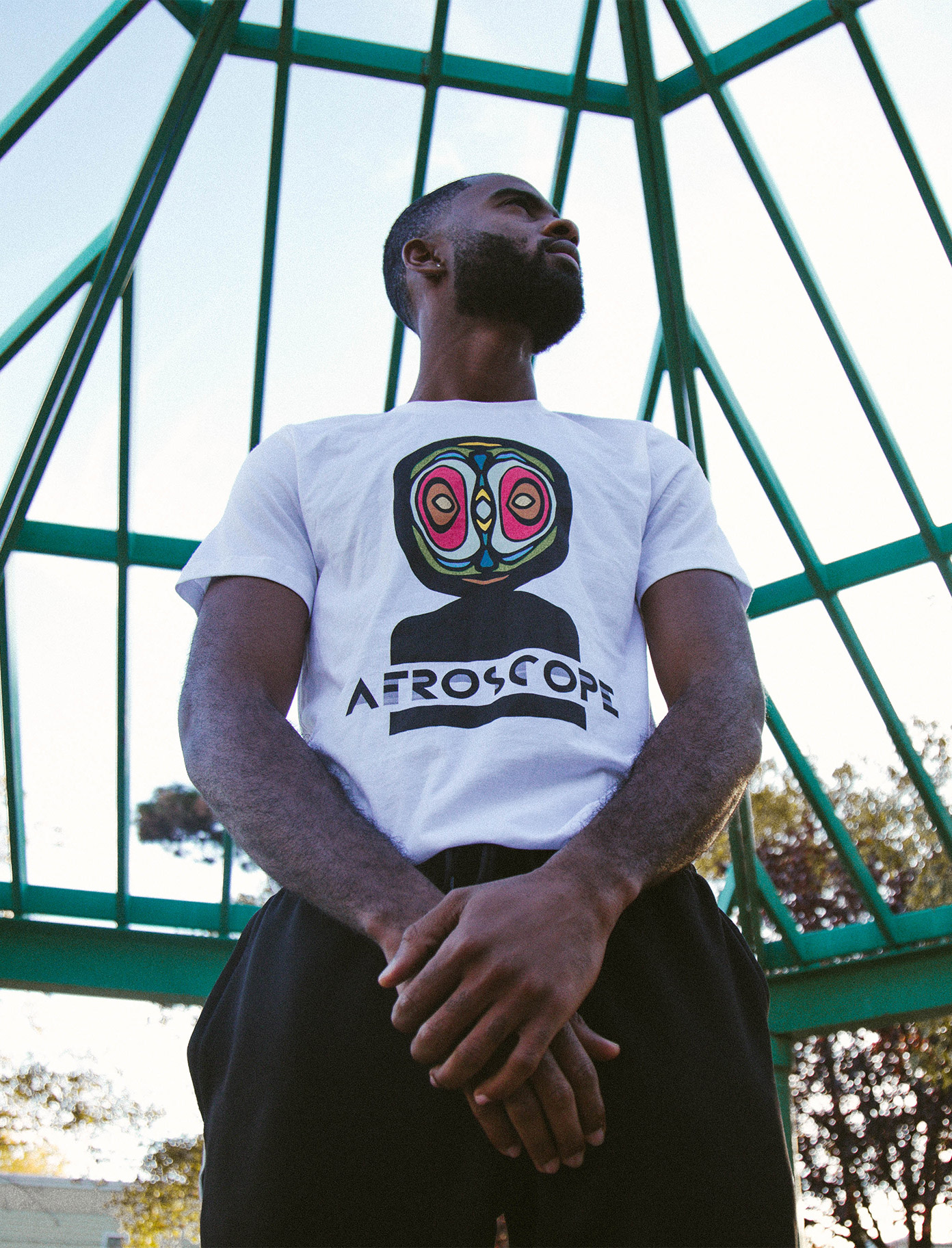

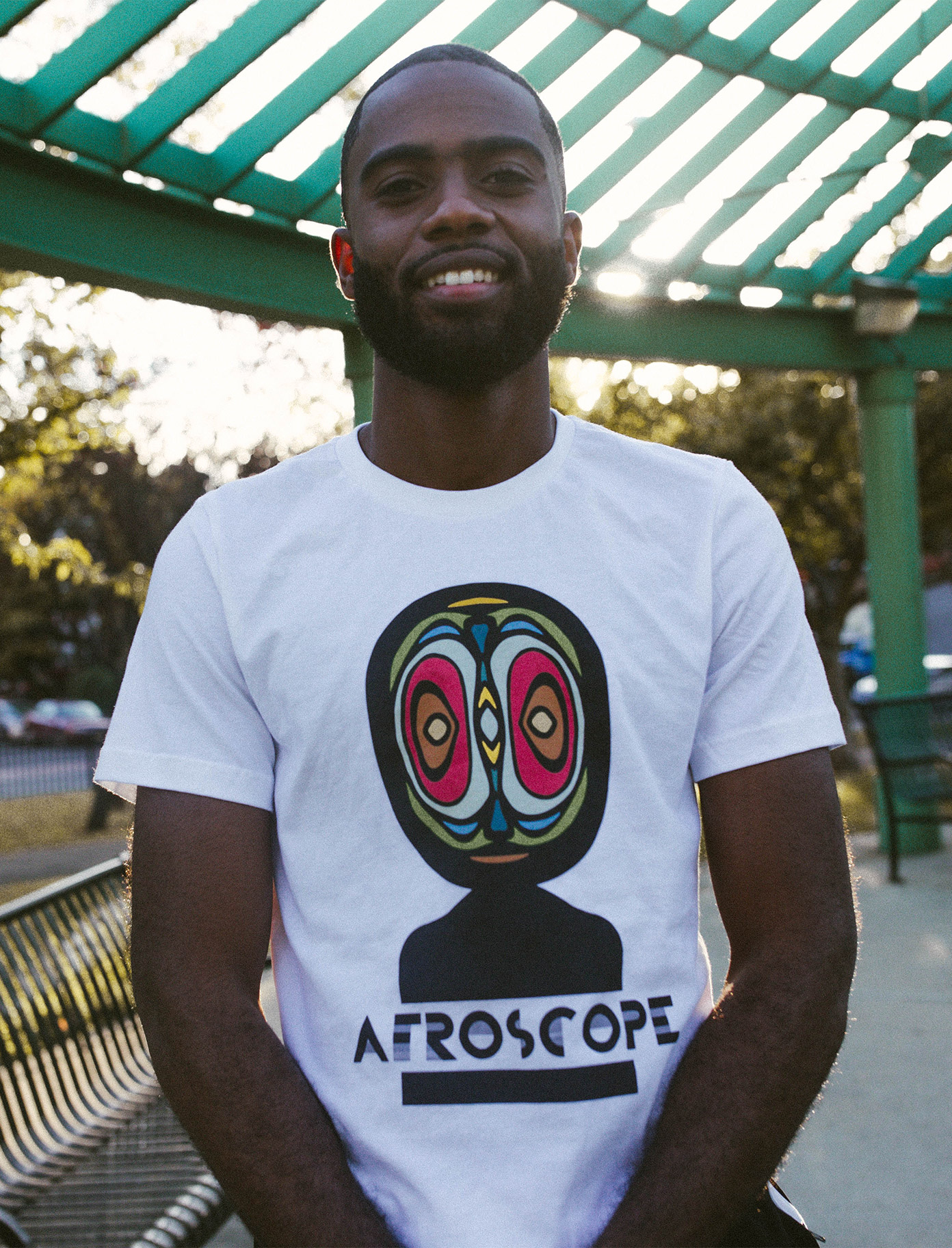
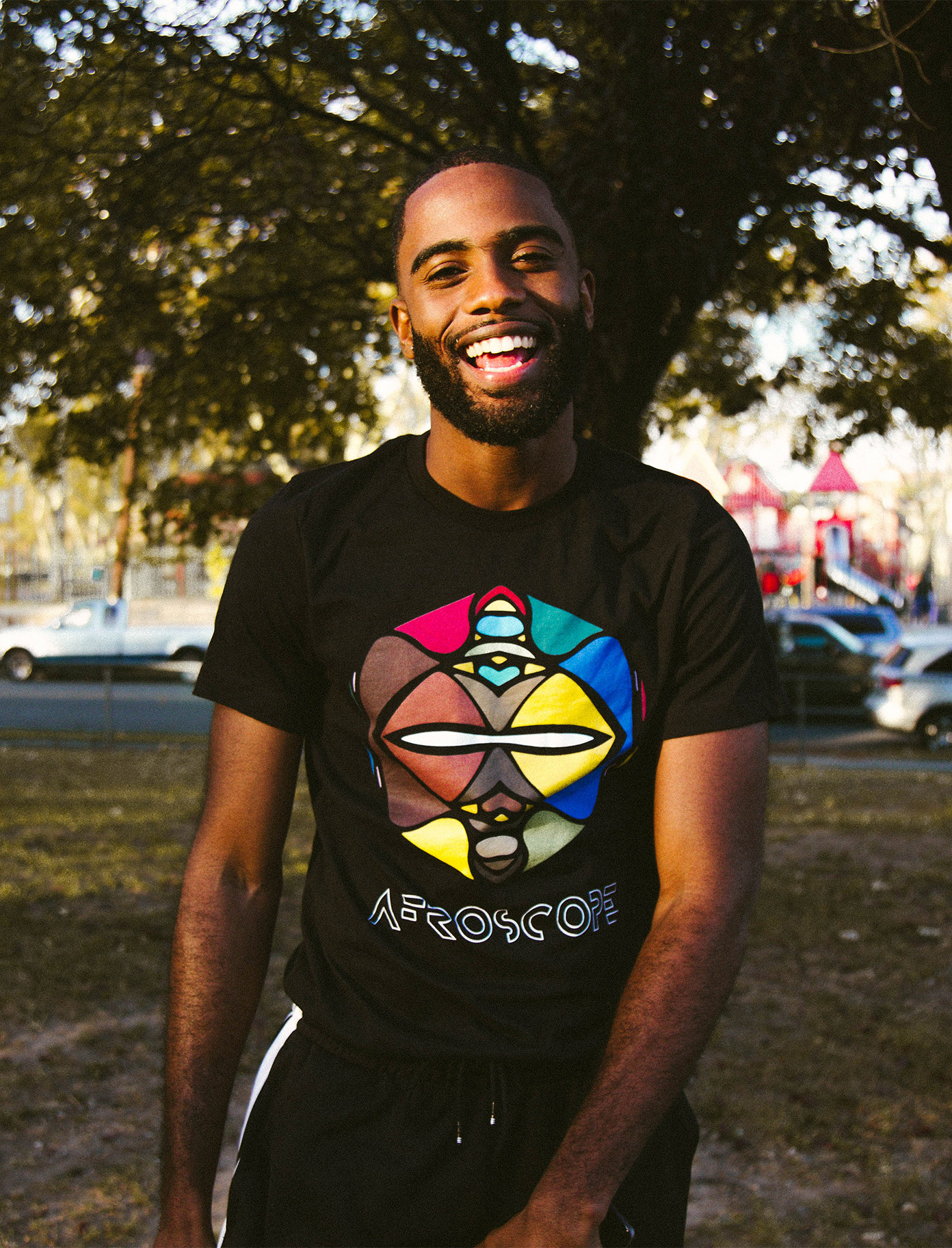
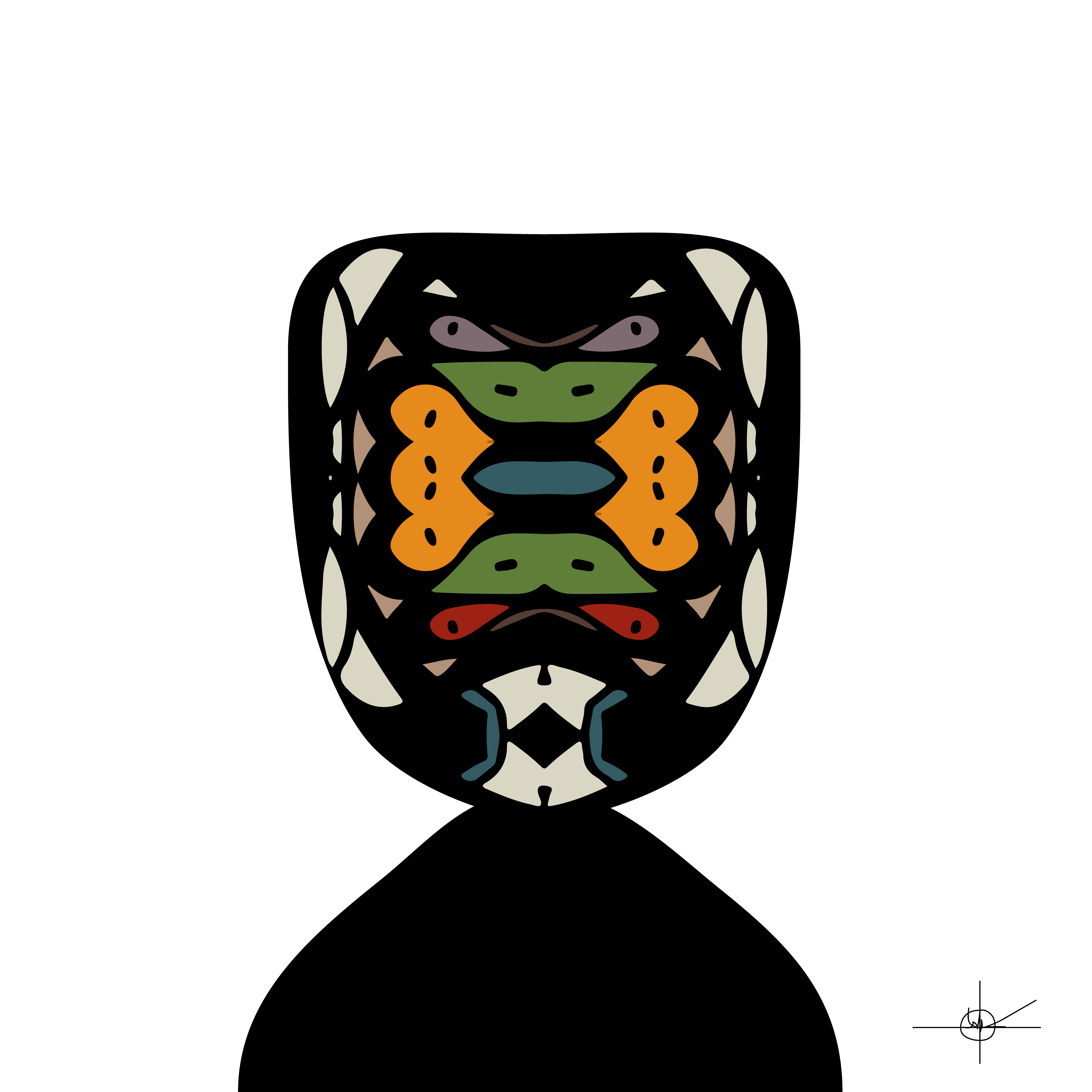
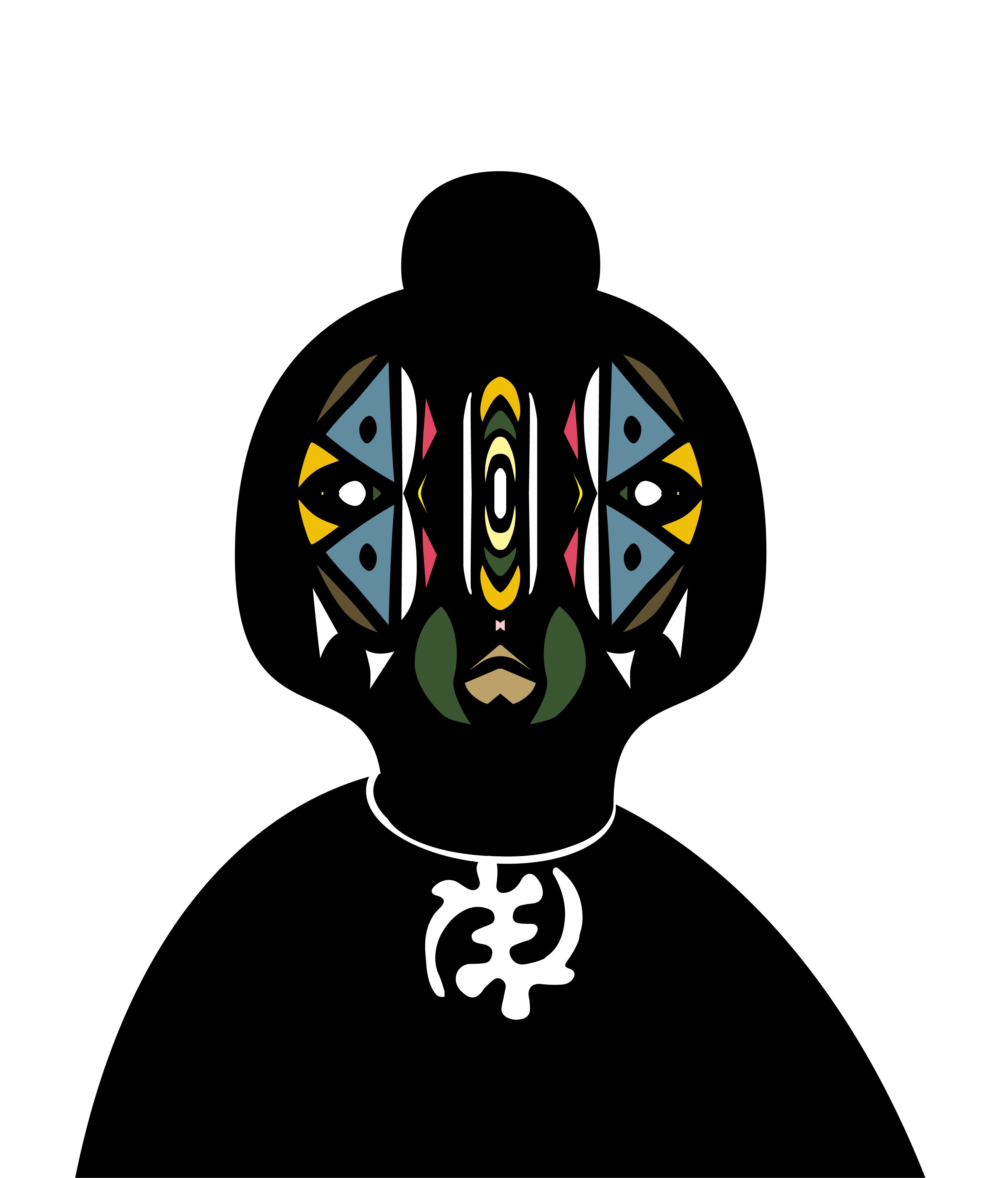
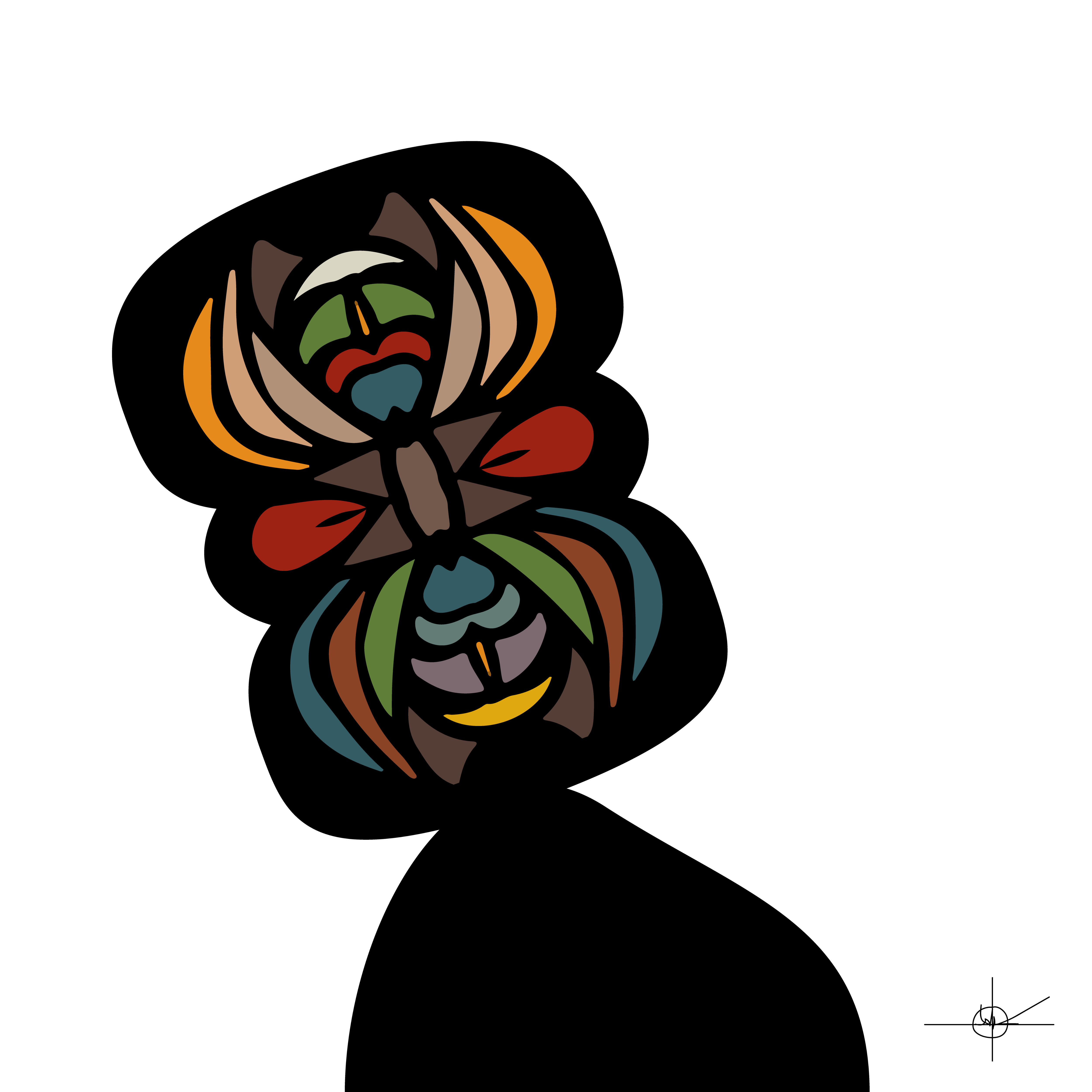
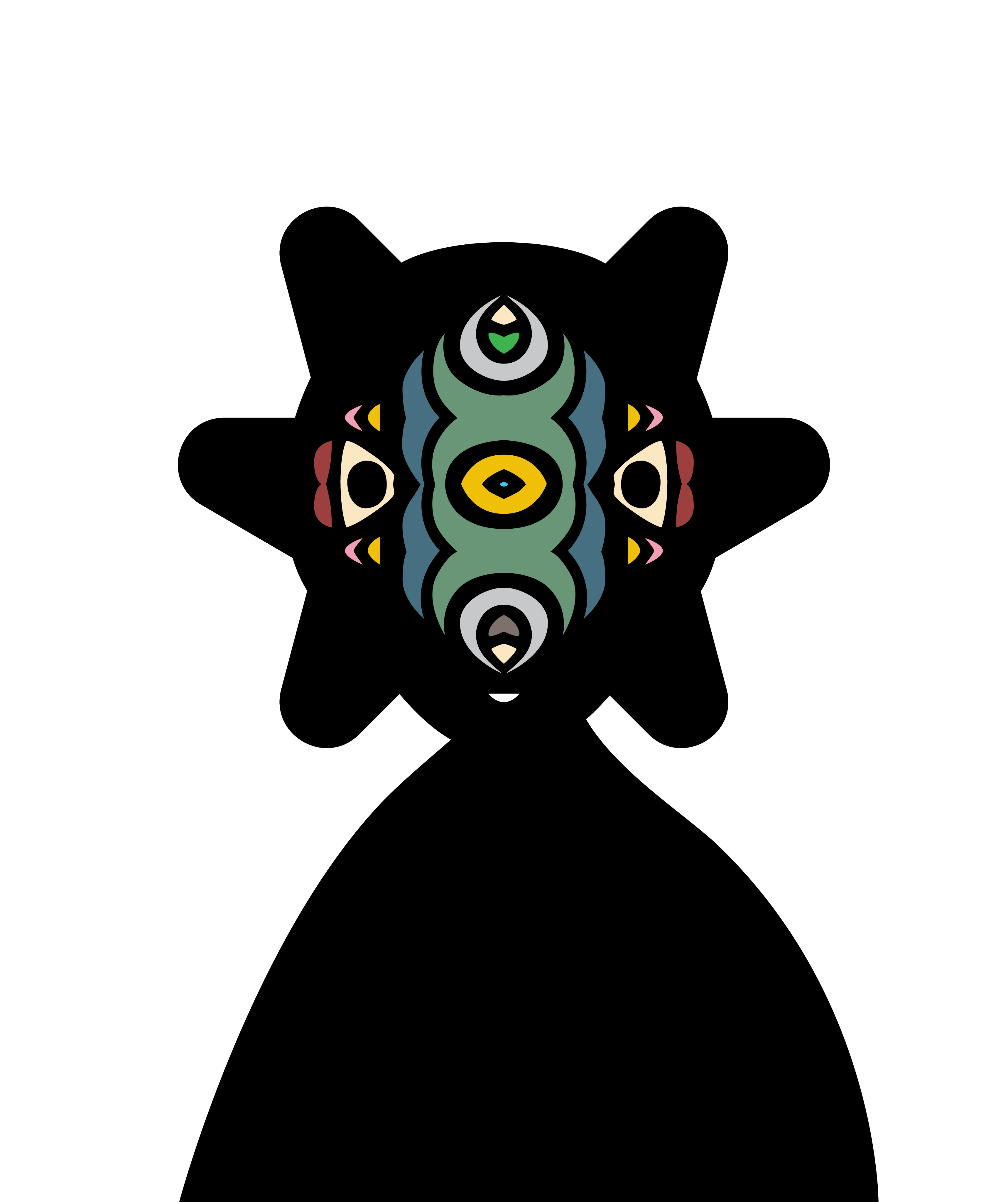
Now I call them ‘obi’ which means 'somebody' in Twi, my native language. Each character to me is an individual in their own right. Like humans, obi are complex and compelling beings. They are reflections of our own mystery and they embody the spirit of oneness which is essentially at their core.
Obiara yɛ obi; everyone is obi.
Everybody is somebody, and that is what this series centers.
Obiara yɛ obi; everyone is obi.
Everybody is somebody, and that is what this series centers.